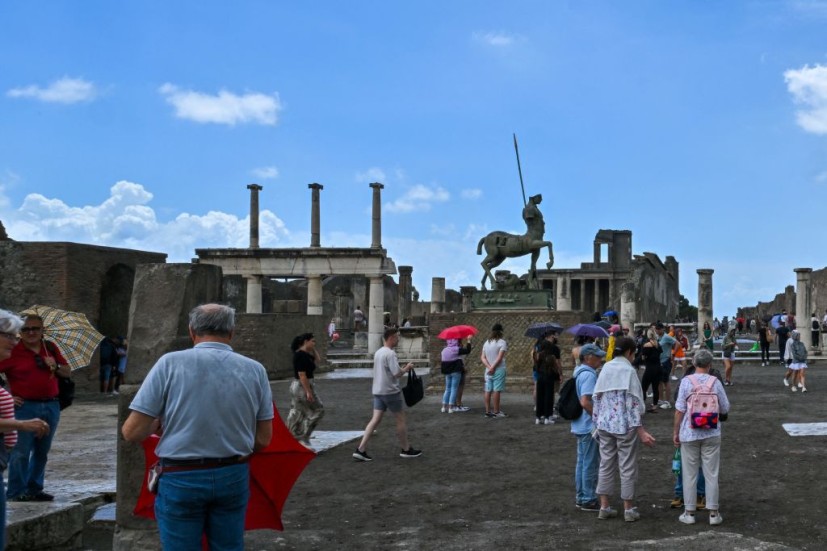Archaeologists of the Pompeii Archaeological Park that was investigating the ruins of the ancient city, located in modern-day southern Italy, have recently made a shocking discovery of a four-walled chamber believed to be a cruelly efficient bread-making facility that has its own elaborate milling and collecting system manned by ancient slave laborers.
The findings were published in the park's official E-Journal "Degli Scavi Di Pompei," and describe a cramp ancient operation termed a "bakery-prison, where enslaved workers and donkeys were confined and exploited to grind the grain needed to make bread."

What is Inside Pompeii's Dreadful Bakery-Prison?
The bakery itself is far from the image of a contemporary pastry shop, with its whimsical aesthetics, as the ancient facility is a completely enclosed room inside a larger building that housed residents. Small windows blocked by iron grates are the chamber's sole light source.
Found in the center of the room are a couple of milling stones that were primarily used to powderize grain into flour, and as noted in the study, were typically powered by pack animals. Specifically, the prevailing theory is that these creatures were donkeys confined in a small space, and forced to do nothing but grind, pacified through the use of blindfolds.
The prison's most prominent features are its group of shallow and round dug-outs embedded into the basalt floor. These circular trenches revealed how the donkeys were guided in their constant grinding. Only one pathway out of the room was built and it led to a stable that housed the animals when they were not used.
Sharing the constricted space with the pack-mules are human slaves, which were deduced to have accompanied the animals constantly to act as a sort of supervisor, ensuring the vicious operation goes as efficiently as it could, as long as it could.
How the Discovery Laid Bare the Roman Empire's Ruthless Utilization of Slavery
The "bakery-prison" was believed to have been continually used until its destruction when Pompeii was overtaken by the showers of fire and ash spewed out by Mount Vesuvius, approximated around 79 AD. This continued usage underlines the sobering reality of how widespread slavery was in the Roman Empire.
Director of the Pompeii Archaeological Park, Gabriel Zuchtriegel, wrote in the E-Journal's article: "It is the most shocking side of ancient slavery, the one devoid of trusting relationships and promises of tampering, where one was reduced to brute violence, an impression that is fully confirmed by the closing of the few windows with iron grates."
According to the paper, the bakery served a well-off Roman family, who lived in relative luxury due to their exploitation of both human and animal slaves. This type of exploited labor for the benefit of the elite was a societal dynamic that was common in the first-century ancient civilization.
The extent of the facility's efficiency and cruelty is highly likely to have been modeled directly after other "bakery-prisons" in the now-ruined city of Pompeii, and even in other ancient cities across Rome. To add, only slaves were given these kinds of back-breaking tasks, as noted in the E-Journal.
The main proponent of the theory that donkeys were the main animals used in these slave facilities is Apuleius, a second-century Roman historian who chronicled one such occurrence of the slaves, both animals and people, marching round and round the "circular furrows" surrounding the stone mills. Apuleius' claims are backed by similar accounts made by his contemporaries, and even by sculptors who depicted the process in motion.
This discovery of the actual physical facility where these acts of savagery took place is the archaeologists' confirmation of the written accounts' authenticity.